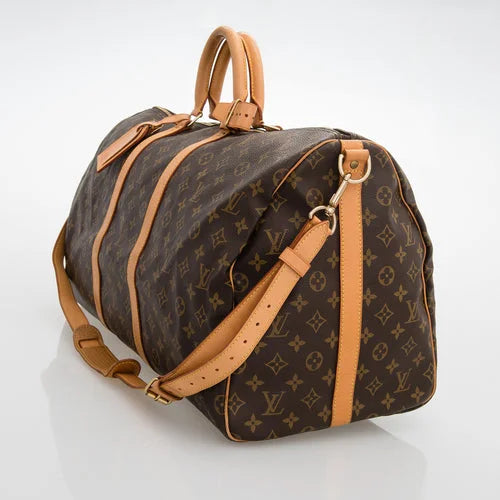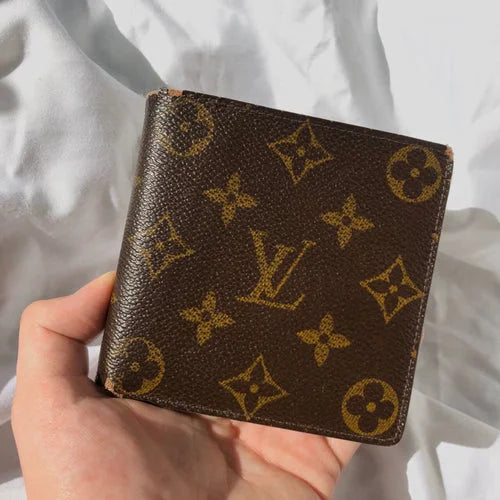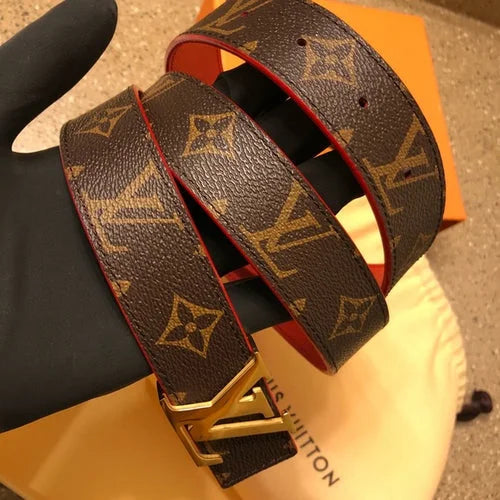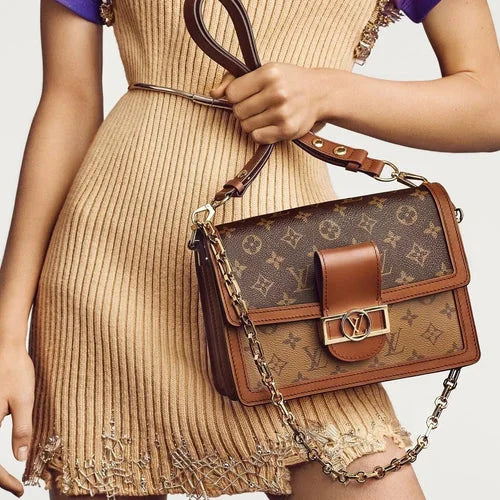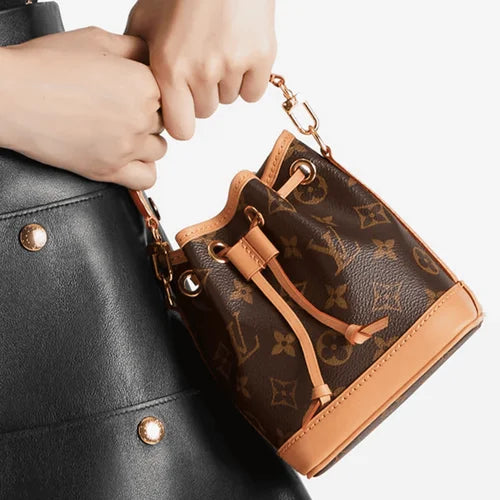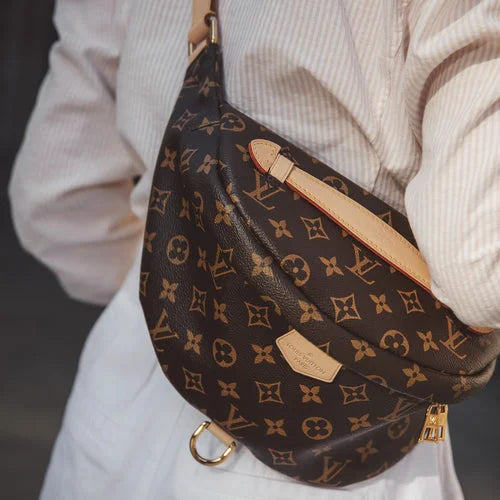How To Authenticate Louis Vuitton Bag
Louis Vuitton is the most counterfeited luxury brand in the world. From the classic Monogram to the coveted Neverfull, counterfeiters target every model with surprising accuracy. But even the most convincing replicas miss the small details – details that tell you if your LV bag is the real deal.
At LegitGrails, we examine over 2,000 Louis Vuitton items each year. With extensive knowledge of the brand’s evolving materials, font types, date code systems, and production standards, our team has developed one of the most accurate LV authentication processes in the industry.
This guide breaks down the key signs of authenticity based on that experience – complete with visual references, model-specific examples, and professional insights.
Monogram Pattern and Logo Alignment
Louis Vuitton’s Monogram canvas is iconic – and extremely hard to replicate correctly. On genuine bags, the logo placement is symmetrical, centered, and consistent with the bag’s proportions. Whether it’s a Speedy, Alma, or Keepall, the Monogram should never be cut off awkwardly at seams or hidden behind stitching.
The Damier patterns (Ebene and Azur) follow a strict checkerboard design. The squares should be perfectly aligned, with crisp edges and textured canvas. Fakes often use duller tones or misaligned squares, and the “Louis Vuitton Paris” square may appear too small or off-center.

Leather and Material Quality
Authentic Louis Vuitton uses premium materials, including coated canvas, Vachetta leather, Epi leather, and suede or microfiber linings. The untreated Vachetta leather used on handles and tabs develops a soft, honey-colored patina over time. It also has a slight leather scent and a smooth but durable finish.
Fake bags tend to use synthetic leather or overly smooth materials that remain pale or dry out quickly. Inside, suede should feel thick and plush, while canvas linings should have a balanced weave – not stiff or overly shiny.


Stitching and Construction

Louis Vuitton craftsmanship is unmatched. Stitching is evenly spaced, straight, and uses thick, waxed thread in matching shades. Most LV bags have a consistent stitch count – for example, five stitches across certain handle attachments.
Counterfeits often show crooked, loose, or overly tight stitching. Threads may be too thin, and corner stitching often lacks sharpness. Pay close attention to tabs and logo labels, where sloppy work tends to appear first.
Hardware and Zipper Function
Louis Vuitton hardware is always high-quality brass or gold-tone metal – never plastic. Zippers feel smooth, and engravings (such as on pulls or studs) are precise and deeply embossed. Fonts on hardware match the brand’s standard: clean, elegant, and evenly spaced.
Replicas may use lightweight metals, hollow zippers, or fade-prone finishes. Common mistakes include shallow engravings or incorrect logo font.

Inside Stamps and Date Codes
One of the most important authentication methods is checking the inside stamp. This includes “Louis Vuitton Paris” and the “Made in [country]” line. Font consistency is crucial: round Os, properly spaced Ts, and a sharp L.
Older models (pre-2021) include a date code – typically a combination of two letters (factory location) and four digits (date of manufacture). For example, “SD2154” means the bag was made in the 25th week of 2014.
Newer models (2021 onward) use an NFC chip instead of a visible date code. These chips can be scanned using a free NFC reader app. Keep in mind: the chip doesn’t always provide data to consumers, but does exist for internal verification.

How to Decode Louis Vuitton Date Codes and Chips (2021+)

Here are some classic date code formats you can find on LV bags.
- 1980s: 3 or 4 digits only (month/year or year/month)
- 1990s to early 2000s: 2 letters + 4 digits (week/year format)
- Post-2007: Week/year format remains, but factories expanded
- Post-2021: NFC chip replaces visible codes

Always cross-check the date code against the “Made in” label. For example, “SP” means France. If the code says “SP” but the label says “Made in Italy,” the bag is likely fake.

Authentic Louis Vuitton Logos and Fonts: What to Check
Here’s what to font and logo details to check if you want to make sure your LV bag is authentic.
Font Consistency
Louis Vuitton’s fonts are unique: rounded Os, sharp and narrow Ls, and evenly spaced characters. Pay close attention to the registered trademark “®” – on fakes, it’s often oversized or printed incorrectly.
Pressed logos (common on leather tabs) should have deep, defined embossing. Printed logos (used on inner labels or linings) must be clear, evenly inked, and aligned correctly.

Common Logo Mistakes in Fakes
- Oval “O” instead of round
- Misaligned or touching letters
- Inconsistent engraving depths
- Faded prints or wrong logo proportions
Handle, Strap, and Lining Inspection
After the logos and fonts, you must inspect the handle and straps. Here are the details you should take a look at.

Handle Aging and Patina
Real Vachetta leather darkens over time. If you’re looking at a used LV bag with bright, pale handles – it’s a red flag.
Authentic handles also show even aging and may have subtle water stains or marks, which is natural. Fakes either stay light or discolor unevenly, especially under the sun.
Lining Material Types
Different models use specific linings:
- Neverfull (Monogram): Striped canvas
- Neverfull (Damier): Red canvas
- OnTheGo: Microfiber suede in beige, red, or black
- Alma: Cotton canvas or microfiber
Each lining has a specific texture and weave—off-model linings are a major warning sign.
Tips for Safe Shopping and Avoiding Fakes
If you want to make sure you’re avoiding fakes, here are some tips to follow:
Buy Only from Trusted Retailers
Stick with Louis Vuitton boutiques, authorized resellers, or platforms that offer verified authenticity checks. Online marketplaces are rife with fakes, even at full price.
Price Too Good? Red Flag!
A Neverfull for $400? That’s almost guaranteed to be a fake. Most Louis Vuitton bags retail between $1,200 and $36,000, depending on model and material.
Check Packaging and Dustbags
Louis Vuitton doesn’t use authenticity cards. Genuine packaging includes a specific dustbag type, which changed over the years – from brown flannel to beige cotton with navy or blue lettering. Incorrect font, color, or stitching is a clear red flag.
Louis Vuitton Authentication Checklist (Quick Recap)
- Perfect Monogram alignment and spacing
- Real leather that darkens over time
- Thick, straight stitching with matching thread
- Brass hardware with deep engravings
- Inner stamps with correct font and placement
- NFC chip or valid date code
- Realistic seller and pricing
Final Thoughts
Spotting a fake Louis Vuitton bag takes experience, trained eyes, and in-depth brand knowledge. With counterfeiters improving every year, it’s no longer enough to “trust your gut.” Small details – like stitch count, font spacing, and handle aging – can mean the difference between real and replica.
If you’re unsure, let the experts handle it. At LegitGrails, we provide fast and accurate Louis Vuitton authentication starting at just $15. You’ll receive expert analysis, visual comparisons, and an official authenticity certificate – typically within 30 minutes.



